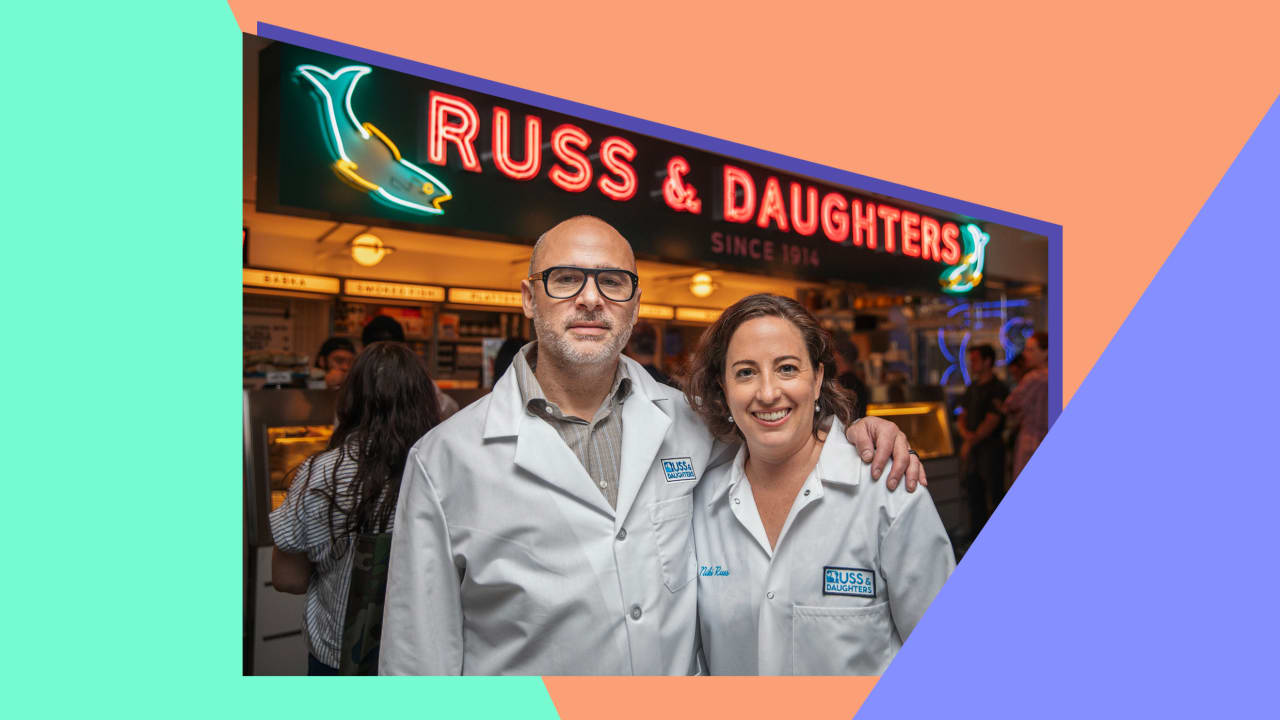Hello and welcome to Modern CEO! I’m Stephanie Mehta, CEO and chief content officer of Mansueto Ventures. Each week this newsletter explores inclusive approaches to leadership drawn from conversations with executives and entrepreneurs, and from the pages of Inc. and Fast Company. If you received this newsletter from a friend, you can sign up to get it yourself every Monday morning.
Popular culture hasn’t offered a very nuanced portrait of family businesses. Movies and television shows portray them either as quaint mom-and-pop operations or, more often, crumbling empires with squabbling relatives jockeying for control.
Niki Russ Federman and Josh Russ Tupper, cousins and fourth-generation co-owners of iconic bagel and lox purveyor Russ & Daughters, offer an alternative narrative—and valuable food for thought on longevity and leadership. Tupper and Federman assumed ownership in early 2010, and under their management, the company has grown from a single storefront with 20 employees to a 150-person business with a full-service restaurant, retail locations, a nationwide shipping facility, and bakery and catering operations.
History Lessons
Federman and Tupper spoke with Modern CEO about how they balance growth and modernization with a healthy respect for tradition. Russ & Daughters was started by their great-grandfather, Joel Russ, who immigrated to New York in 1907 and began selling schmaltz herring (herring pickled in brine) out of a barrel on the Lower East Side. He opened a store in the neighborhood in 1914 and moved it to its current location in 1920. Russ made his daughters partners in his business in 1935, and according to the company’s website, it was the first American company to have “and daughters” in its name.
“Our core principle is to stay connected to our family’s history and the history of the business, and it is present in every decision that we make,” Tupper says, adding that the key to making changes at Russ & Daughters “is to make them indiscernible to the public.” Federman says she feels empowered to innovate, but the company’s legacy always informs innovations—and often makes them better.
Staying True to Your Roots
When she and Tupper were scouting locations for Russ & Daughters Cafe, which would be the company’s first new location in nearly a century, they came close to signing a lease in New York’s Chelsea neighborhood, some 20 blocks north of the flagship store. The night before they were about to sign the lease, Federman started to have second thoughts. “This just doesn’t feel right,” she recalls telling her husband. Then Tupper called. He also had a change of heart. In 2014, they opened the restaurant just a short walk from the store to raves, with many reviewers praising the restaurant for its location and décor.
“We realized we had to stay in the neighborhood,” Federman says. “The Lower East Side and Russ & Daughters are inextricably linked. Part of the reason people come to Russ & Daughters is because we are a vehicle for them to relive their memories or walk the streets that their families and ancestors walked.”
I asked Federman and Tupper what leaders of corporations and bigger organizations could learn from their 110-year-old family business. Tupper, who spent the first part of his career working in tech and semiconductors, noted that Russ & Daughters doesn’t have a mission statement to motivate employees. “We don’t need a mission statement,” he says. “Our mission statement is the story of who we are.” It is a story that he, Federman, and their leadership team are constantly communicating to employees and customers.
Greater Good Over Faster Growth
Tupper says they also let employees know that the company is not for sale, and that it plans to grow as a privately held, family-owned business. (The family frequently gets offers from outsiders seeking to buy the business or franchise it.) “We take a very long-range view of things,” Federman adds. “We’re not just looking at the next quarter or the next shareholder meeting. We’re thinking about how a decision sets us up for the next generation of customers and, hopefully, family. What would happen if more people in corporate settings thought: ‘How does my decision or my path leave things for a future generation?’”
Federman’s question is one I often ask myself. I recently revisited author Bo Burlingham’s Small Giants, which encourages companies to redefine success and avoid a “growth at all costs” mentality. Many of the companies he profiles share Federman and Tupper’s long-range view of their businesses. It is certainly easier for a small, private company to eschew growth in favor of longevity. (Federman says that when she and Tupper were looking for space for Russ & Daughters Cafe, they told prospective landlords they were looking for a 100 year lease—and they were only half joking.) But there are many larger organizations, such as MassMutual and Amazon, that embrace the long view. In Amazon’s case, its willingness to invest based on what founder Jeff Bezos called “long-term market leadership considerations” rather than take profits has sometimes hurt its stock price. Yet, with its market valuation at $1.8 trillion, it is clear that long-termism has paid off for the company and its investors.
What Drives Your Decision Making?
Does your organization make decisions based on what it means for the next generation of employees or owners? How does that long-term thinking show up in your companies? Share your thoughts with me at [email protected], and we will feature the best answers in a future newsletter.
Read and watch: heritage brands
How Motown, the NAACP, and Smucker’s stay relevant







